Clos des Papes is one of the great established names of Châteauneuf-du-Pape alongside Beaucastel, Vieux Télégraphe, Charvin, and, the epic Rayas. In recent years has produced a succession of remarkable wines made by Paul-Vincent Avril.
Clos des Papes covers 40 hectares divided into 24 distinct plots. This division enables control of grape maturity during harvest and to mix several grape varieties (65% Grenache, 20% Mourvedre, 10% Syrah, 5% Counoise, Vaccarese and Muscardin for the reds) and different terroirs. Clos des Papes is one of the few estates to use all permitted varieties for both red and white Chateauneuf.
The yields are about 28 hl per hectare, sometimes falling below 15 hl as in 2013! To put this into context Romanée-Conti is permitted to yield around 35 hl per hectare in most years, although they typically yield around 25 hl per hectare. On top of that they undertake a severe sorting of the harvest. Aged in oak casks for 12 to 15 months depending on the vintage, the wines are traditionally fined with egg white but not filtered.
So what of the 2015 Clos des Papes. It’s a bold wine, plenty of violets, none of them shrinking! This is a big boy with plenty going on. The prettiness of Grenache, the structural element of Mouvedre, the complexity of the little splashes of each variety and different terroir have you finding a new entrancing aroma every time you sniff it, adding so much intrigue. At 15% there is an alcohol drive to finish, that just holds itself in balance.
If you like your Châteauneuf more feminine in style grab a Charvin.
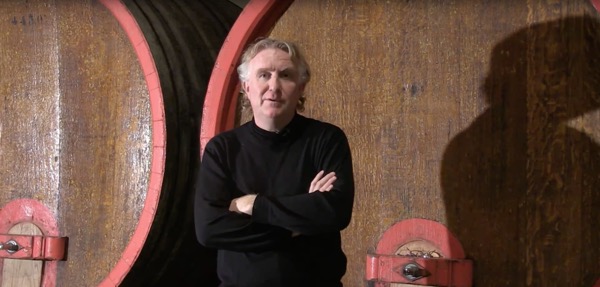
The Avril family has been settled in Chateauneuf du Pape since 1600, with the first vintage of Clos des Papes in 1896, made by the great-grandfather of the current owner, Paul Avril. He contributed greatly to the creation of the Chateauneuf du Pape appellation: he gathered a commission at the town hall of the village in 1911 to establish the AOC which was launched in 1936. His son Regis Avril continued the export of the Clos des Papes (75% of the production is exported to 25 countries!). It was served in particular at the Elysee to General de Gaulle.
His son, Paul, who joined at age 26, has perpetuated the tradition of quality, gradually transfer the estate to his own son, Paul Vincent from 1988. For more than 20 years, Paul Vincent has maintained the estate’s philosophy. Traditional elaboration, maturation, of fine wines made for ageing, and irreproachable quality. He kept ignoring the temptations to produce some “garage wines”, offering only one quality of reds (90% of the production of Clos des Papes, the remaining 10% being white). Clos des Papes is unique, coming from an exceptional and harmonious blending of grape varieties and complementary terroirs.
Clos des Papes are well-known for producing one of the most authentic and long-lived examples of the appellation.
Vintage at Clos des Papes (in French)
A bit of History
Châteauneuf-du-Pape literally translates to “The Pope’s new castle” and, indeed, the history of this appellation is firmly entwined with papal history. In 1308, Pope Clement V, former Archbishop of Bordeaux, relocated the papacy to the town of Avignon. Clement V and subsequent “Avignon Popes” were said to be great lovers of Burgundy wines and did much to promote it during the seventy-year duration of the Avignon Papacy. At the time, wine-growing around the town of Avignon was anything but illustrious. While the Avignon Papacy did much to advance the reputation of Burgundy wines, they were also promoting viticulture of the surrounding area, more specifically the area 5–10 km (3–6 mi) north of Avignon close to the banks of the Rhône. Prior to the Avignon Papacy, viticulture of that area had been initiated and maintained by the Bishops of Avignon, largely for local consumption.
Clement V was succeeded by John XXII who, as well as Burgundy wine, regularly drank the wines from the vineyards to the north and did much to improve viticultural practices there. Under John XXII, the wines of this area came to be known as “Vin du Pape”, this term later to become Châteauneuf-du-Pape. John XXII is also responsible for erecting the famous castle which stands as a symbol for the appellation.
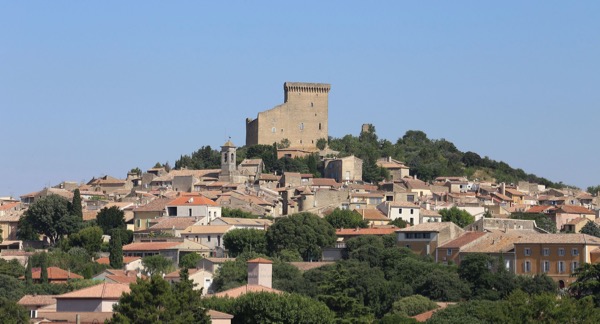
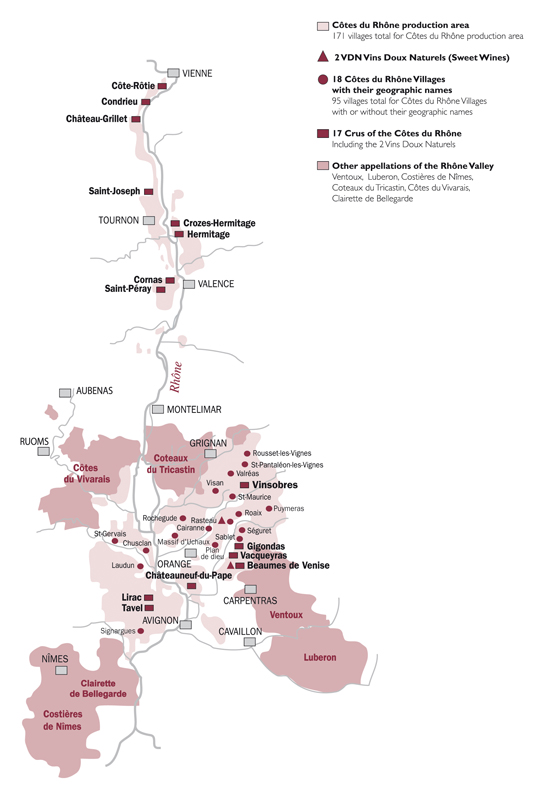
Click to enlarge 🔎
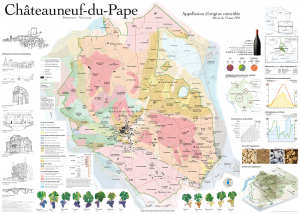
The Grape Varieties of Châteauneuf
Châteauneuf-du-Pape is traditionally cited as allowing thirteen grape varieties to be used, but the 2009 version of the AOC rules in fact list eighteen varieties, since blanc (white), rose (pink) and noir (black) versions of some grapes are now explicitly listed as separate varieties. Also in the previous version of the appellation rules, Grenache and Picpoul were associated with different pruning regulations in their noir and blanc versions, bringing the number of varieties previously mentioned from thirteen to fifteen.
Red varieties allowed are Cinsaut, Counoise, Grenache noir, Mourvèdre, Muscardin, Piquepoul noir, Syrah, Terret noir, and Vaccarèse (Brun Argenté). White and pink varieties are Bourboulenc, Clairette blanche, Clairette rose, Grenache blanc, Grenache gris, Picardan, Piquepoul blanc, Piquepoul gris, and Roussanne. (The varieties not specifically mentioned before 2009 are Clairette rose, Grenache gris and Piquepoul gris.)
Both red and white varieties are allowed in both red and white Châteauneuf-du-Pape. There are no restrictions as to the proportion of grape varieties to be used, and unlike the case with other appellations, the allowed grape varieties are not differentiated into principal varieties and accessory varieties. Thus, it is theoretically possible to produce varietal Châteauneuf-du-Pape from any of the eighteen allowed varieties. In reality, most Châteauneuf-du-Pape wines are blends dominated by Grenache. Only one of every 16 bottles produced in the region is white wine.
About the Wines
Clos Des Papes Châteauneuf-Du-Pape 2015
This has a drop-dead gorgeous core of cassis and raspberry pâte de fruit flavors that holds center stage but still allows notes of Lapsang souchong tea, anise, incense and shiso leaf to chime in. Very long, with a sublime feel through the mineral-tinged finish. So seductive already, but this will cruise in the cellar. Drink now through 2040.
Bottled in May, the 2015 Chateauneuf du Pape is a floral, elegant, unbelievably complex wine. Roses and violets, cherries and stone fruit, cinnamon and allspice and more are carried across the full-bodied yet almost weightless palate, finishing in a swirl of silky tannins and lingering spice. Drink it over the next two decades. Because there are fewer wines to taste at Clos des Papes—Paul-Vincent Avril steadfastly produces only a single white and a single red Châteauneuf du Pape—there is more time to talk. "I love Burgundy," he says, and that preference is reflected in the wines. On the other hand, "Maturity for Grenache is never under 14.5%, but it's not at 16% or 17% for me." He also allows that it's not all about Grenache, saying that complexity comes from blending varieties and sites, which he often does in the same fermentation vats. There's no oak used for the whites because he feels the wines lose too much freshness. For the reds, it was instructive to taste through various foudres to see the differences that varietal makeup and site can have on the wines. He compares 2016 to 2010 and 1990, while 2015 he likens to 2005 and 1978. You won't be disappointed in whichever one you choose.(JC)
A superlatively elegant, middleweight, Mourvèdrerich Châteauneuf that glides across the palate like silk, featuring juicy plum and strawberry fruits, lifted juniper and fennel seed freshness. Very fine clay tannins. Intense but not through extraction; generous, but with energy and precision. Effortless.(MW)
Deep ruby. Hugely aromatic red and dark berry, potpourri and floral scents are underscored by smoky minerality and an exotic suggestion of Asian spices. Sappy, focused and impressively deep yet lively, offering alluringly sweet raspberry, cherry compote and spicecake flavors and a refreshingly bitter touch of blood orange. Puts on weight and spreads out steadily with air, acquiring a succulent herb note that carries through the strikingly long, mineral-laced, gently tannic finish. This beauty is shaping up to be among the standouts of this extremely successful vintage. (JR)
Tasted on three separate occasions, the 2015 Châteauneuf-du-Pape from Paul-Vincent is a classic, elegant, and incredibly complex style of wine reminiscent of a Grand Cru Red Burgundy (Chambolle-Musigny?). Black raspberries, blueberries, incense, pine resin, dried orange and exotic floral notes give way to a medium to full-bodied, ethereally textured 2015 that has moderate tannin, beautiful purity, and a seamless finish. I compared this to an improved 2005 last year when I tasted it from barrel, but I’m not sure that comparison holds today, and I struggle to come up with another similar vintage. Nevertheless, this is a beautiful wine that should be at its best from 2020-2030+.
Impressive and bright mixed summer berry and spiced cherry fruits on the nose in a vibrant, alluringly complex style. The palate delivers succulently ripe red cherry and plum fruit flavors. Plenty of weight. Gently warm and spicy finish. Drink from 2020.
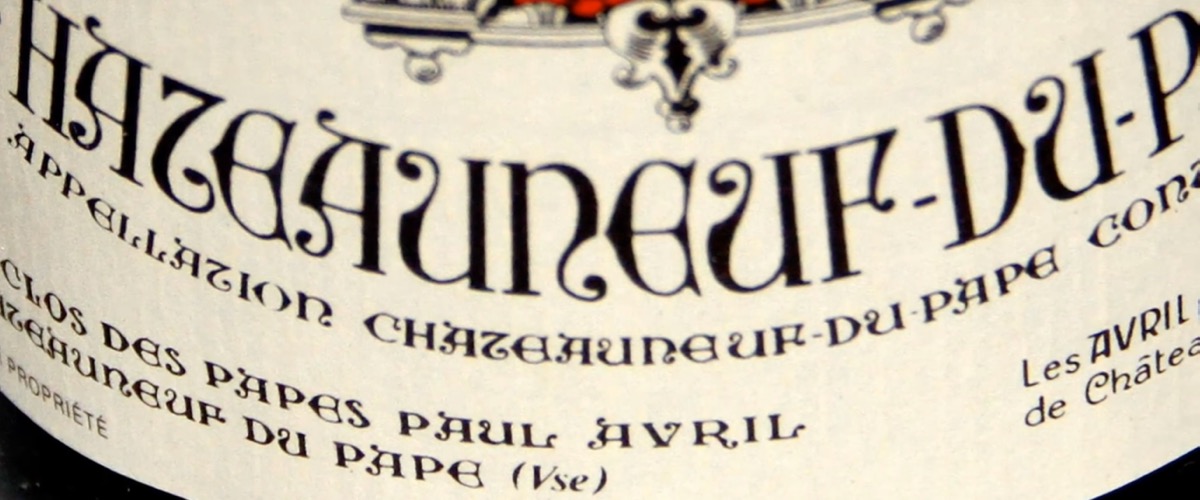
You must be logged in to post a comment.